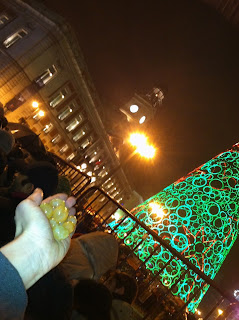July 14, 2010 - Dali, Yunnan, China
"Make my home everywhere within the four seas
The world is my home
The world is my oyster"
~Xiao He
I could live here.
Instead of wasting a day traveling from Kunming to Dali, we took an overnight train and slept in bunks stacked three high. Dali is located at 6,000 feet with the Cangshan Mountains to the west and Erhai Lake to the east. For some reason, on a couple different occasions, we have been warned to not steal the exotic orchid species found around Dali. Apparently, native Yunnan orchids are often raided and illegally exported by foreigners. Breeders from Europe will pay upwards of $10,000 U.S. for one plant. Some of these orchid species have not been scientifically identified.
If I were to live in Dali for six months, I could teach English by day and hire a study-tutor to help my Mandarin by night. In Old Dali, there is a Germany bakery at the end of the street, espresso coffee shops on every corner, restaurants serve pizza and milkshakes, and although haven't partaken, I hear there are good clubs for live DJ's and dancing.
If I were to live in Dali for six months, I could teach English by day and hire a study-tutor to help my Mandarin by night. In Old Dali, there is a Germany bakery at the end of the street, espresso coffee shops on every corner, restaurants serve pizza and milkshakes, and although haven't partaken, I hear there are good clubs for live DJ's and dancing.
For the average backpacker, Dali is paradise - where foreigners can obtain many legal and illegal Western desired items.
Dali is rural, but they still have a Walmart.
In 2005, there were 46 Walmarts in China.
Today, there are over 100 Walmarts in China.
There are many ethnic minorities in Dali, but we are spending most of our time with members of the Bai. The Bai also call themselves "Baizi", "Baini" or "Baihuo", meaning white people. All Bai women, when wearing traditional garb, have an embroidered headdress with white fringes (symbolic of glacial snow seen on surrounding mountains). The grandmother makes the headdress for her granddaughter. The headdresses' white tassels flow long, until cut short when a woman marries.
Dali is most famous for the Three Pagodas. The first pagoda, built during the 9th Century, and the two side pagodas, built in the 11th Century, create a perfect equilateral triangle. Behind the Three Pagodas is the recently restored Chongsheng Temple. When China decided to restore the temple, they added Buddhism from all over the world; including Korea's drum, fish, cloud, and bell; Tibet's prayer wheels; and China's Laughing Buddha. These images are rarely seen together. Another co-traveler referred to the temple as "Buddha Land".
One Buddhist image abundantly seen in Yunnan is Guan Yin, The Goddess of Mercy. When Buddhism arrived in China, Daoism was the established religion. Most Buddhist Bodhisattva are males, but Guan Yin is female. The debate for why this happened vary. Some believe Buddhist modified an established Daoist deity with Bodhisattva features, making it easier to accept the new religion. The Bai believe Guan Yin evolved from the image of Siddhartha to become a woman (Bai people are matriarchal). Many believe Guan Yin is both male and female. I think she looks like Hindu's Shiva (who is also portrayed as male and female). Guan Yin's headdress is similar to the Bai women.
We spend each day frantically taking in as much of China's southwest as possible. But this afternoon, a few friends and I leisurely strolled to a local tea shop to learn about Yunnan's famous Puer tea. The creation of Puer tea was probably an accident. As merchants traveled Ancient Tea Trade routes, they pressed tea into cake shapes for efficient use of space. As traders traveled extended distances and products exchanged many hands, the tea would age - eventually becoming fermented. Puer can be both a green or black tea, but most importantly it is fermented tea. Like a good wine, with age, Puer tea only gets better.
Yunnan has experienced an unusual drought for the last six months, drying up many freshwater drinking water springs. Luckily, we brought the Pacific Northwest rains with us. Monsoon rains are arriving at scheduled 5pm intervals.



